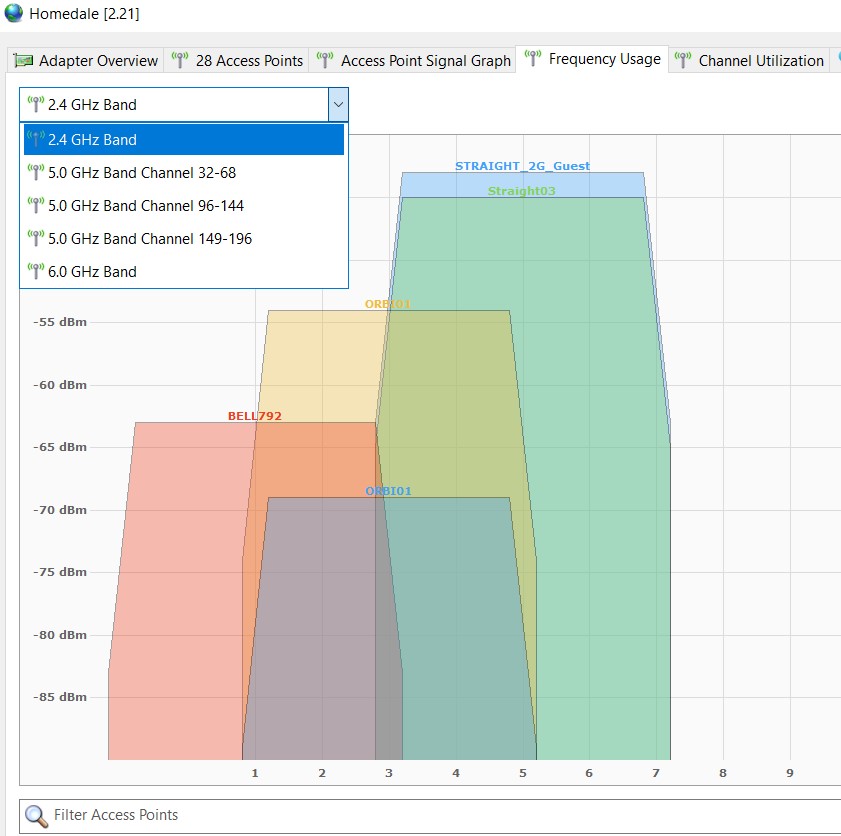 |
August 2025 Featured Software |
| Submitted October 16, 2025 by Dan Delong |
A few similar Wi-Fi monitors are out there - some provided with the purchase of certain routers (like Amped) - but this one seems fairly complete. (It was mentioned in our general meeting's pre-amble.) Searching for "Homedale Wi-Fi monitor" will yield several possible download sites. I initially chose the Microsoft download site, partly because it indicates coverage for WiFi 7, but the download was only about a 1 GB installer. I then downloaded from lo4d.com, which may be an even newer version, and it claims compatibility with Win 7 and higher. Most users will be happy to know that this latter version requires no installation - runs directly from the .exe file. In my neighbourhood, lots of signals were in the 2.4 band, some in the 5.0 bands and none in WiFi 6.0 (just 233 empty channels). In total, 31-35 access points were found by Homedale.
The first tab is an Adapter Overview - details about your router's hardware. The column readouts for Access Points are extremely detailed:- SSIDs (name given to most access points), Mac Adresses, Vendors (manufacturer of the hardware), Signals Strengths - actual and historical (in minus dBs, lower numbers being the best signals), Methods of Encryption (all were at least WPA2 PSK), Coundry IDs (most CA and a few US that disappeared), Modes (Infrastructure and WPS), Frequencies (of channels), Bands (mostly 2.4, some 5.0, none at 6.0 yet), First seen / Last seen, Bitrates, Info (for some giving number of stations and % channel usage), Adapters (all using Intel Centrinos), Suggested Channel (some newer routers choose the optimum channels themselves), Width (in MHz), Quality (??), Specifications (of the 802.11 signals), Station Counts (0,1,2,3, or 4), Names (model name for some), Streams (includes MU), Channel Utilizations (again, in percent).
Note:- Options for Frequency Range include 2.4, up to 6.0 (and possibly 7.0 for the Microsoft version). If your router is an older model, you may be able to avoid obvious channel clashes by picking a better channel, or channel range, in the user interface for that particular router. One more final tab, called "Location" was able to pinpoint the location of my router, on a map, using Google Geolocation (within 17 metres) System requirements: Platform: Win7 and higher (32 / 64-bit) Version: 2.21 Languages: English, and possibly German Download Size: 888 KB Installed Size: 1.9 MB Licence: FREE Rating: |


